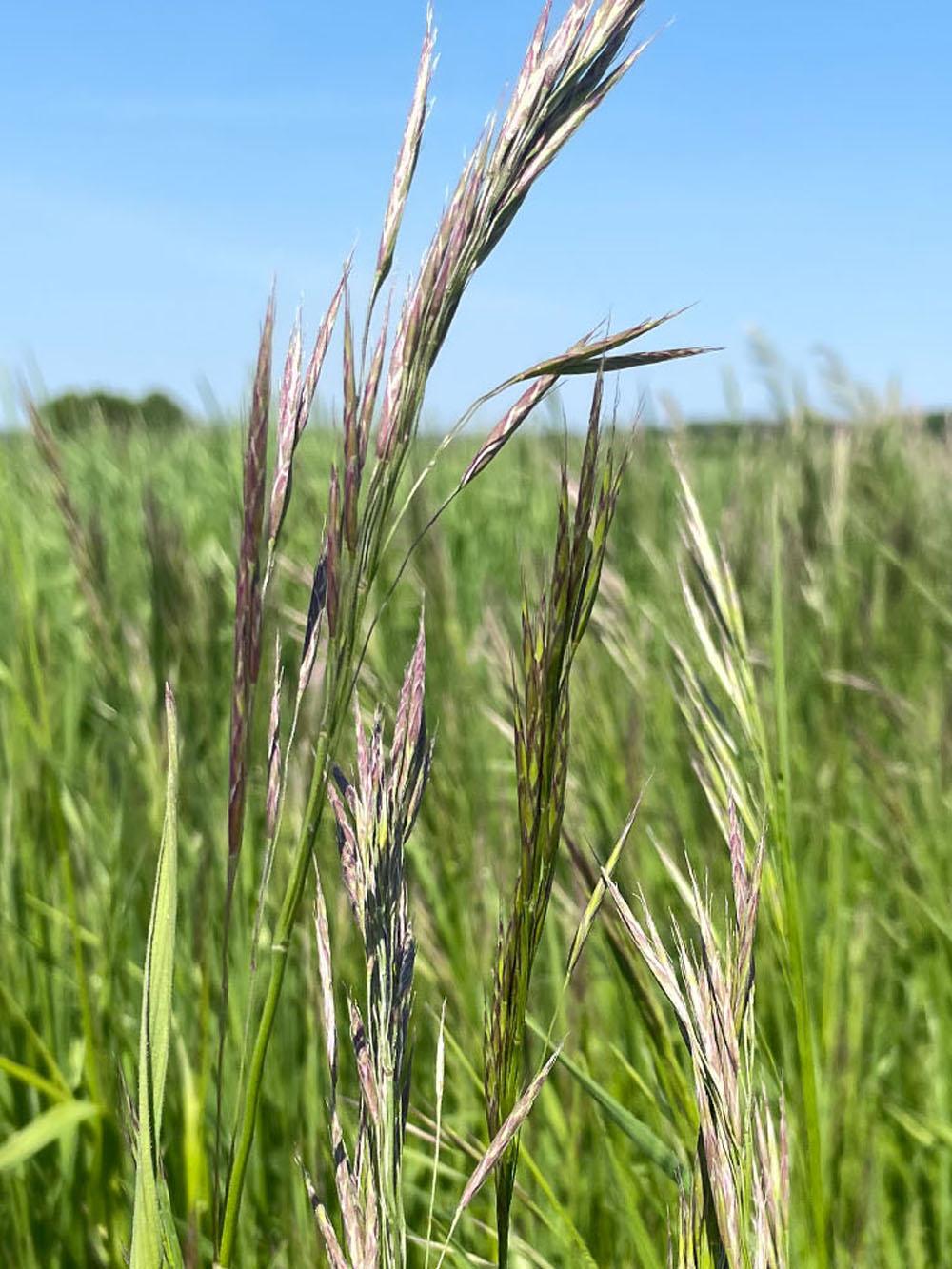Bromus commutatus

MBA
MBA meadow bromegrass is a perennial, cool-season forage grass. Primarily used for grazing, it has consistent, high yields throughout the growing season and recovers quickly, making it a popular choice for hay, haylage, or pasture production. Meadow bromegrass can also be used in upland bird and wildlife plantings because it serves as excellent forage for larger game animals and waterfowl. It is very winter-hardy and performs best on fertile, moderately deep, well-drained soils, although it tolerates a range of soil textures. It does not tolerate flooding. If meant for permanent grazing pasture, it should not be grazed until the late fall of its second growing season.
Key features
- Excellent forage yield
- Excellent winterhardiness
- Early spring growth
- Good forage quality
- Good seasonal growth pattern
General Characteristics
Type
Meadow
Livestock
Cattle ,
Goats ,
Hogs ,
Horses ,
Poultry ,
Sheep
Usage
Hay ,
Silage ,
Pasture
Segment
Forage
Species
Meadow Bromegrass
Sci. Name
Bromus commutatus
Seed Characteristics
Seed Pubescence
Strongly Pubescent
Seed Weight
4.2g/1000 Seeds
Plant Characteristics
Lodging Resistance
Good to Fair
Lemma Pubescence
Glabrous
Panicle Attitude
Erect
Branch Attitude
Erect
Panicle Color
Little or No Anthocyanin
Panicle Length
Medium
Panicle Shape
Moderately Open
Awn Length
Medium
Node Pubescence
Moderately Pubescent
Stem Pubescence
Moderately Pubescent
Sterile Culm Leaf Number
5
Collar Shape
V-Shaped
Fertile Culm Leaf Elevation
Medium to High
Fertile Culm Height
Medium to Tall
Sterile Culm Leaf Elevation
Medium
Sterile Culm Height
Medium to Tall
Flag Leaf Length
Medium
Auricles
Absent
Flag Leaf Width
Medium
Leaf Abundance
Few
Leaf Attitude
Semi-Erect
Leaf Blade Color
Medium Green
Leaf Length
Medium to Long
Leaf Ligule
Present
Leaf Width
Medium
Leaf Sheath Color
Green
Leaf Pubescence
Slightly Pubescent
Waxy Bloom on Leaf
Absent
Emergence (Days)
14
Growth Habit
Erect to Intermediate
Degree of Basal Tillering
Medium
Winter Hardiness
9
Seeding Information
Approx. Seeds/Lb.
93000
Approx. Seeds/Kg.
200000
Seeding Rate - Alone/New (Kg./Hectare)
13-23
Seeding Rate - Alone/New (Lbs./Acre)
12-20
Planting Times
Spring, Late Summer-Early Fall
Seeding Rate - Mixes (Kg./Hectare)
6-11
Seeding Rate - Mixes (Lbs./Acre)
5-10
